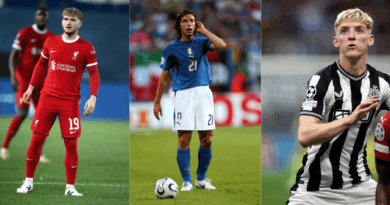England given major lift in FIFA’s new draw format while Scotland lose out
FIFA has confirmed a major structural change to the 2026 World Cup, reshaping the knockout landscape and delaying potential clashes between the top-ranked nations until the final stages of the tournament.
Announced Tuesday during a briefing on final seeding rules, the update marks the first time in World Cup history that the four highest-ranked teams cannot meet before the semi-finals provided each wins their group. The shift hands England a notable advantage, while Scotland see no comparable benefit.
Seeding and tournament expansion
According to FIFA’s seeding documents released this week, the 48-team World Cup will divide nations into four pots using the latest global rankings. Hosts United States, Mexico and Canada receive automatic placement in pot 1.
They are joined by the nine highest-ranked teams, while the next two tiers of twelve fill pots 2 and 3. Pot 4 contains the lowest-ranked qualifiers and six placeholders for the European and intercontinental play-offs set to be decided in March.
Read also: Brazil begins early planning as talks with Ancelotti expected ahead of 2026
This new structure ties directly to the tournament’s expansion from 32 to 48 teams, a major change approved to broaden representation and increase global participation. The enlarged format required adjustments to the draw and knockout stages.
Knockout pathways set to separate heavyweights
FIFA confirmed that the updated format divides the knockout bracket into two distinct pathways. Spain and Argentina, the world’s top two sides, will be placed on opposite halves of the bracket to ensure they cannot meet until the final.
The same arrangement applies to France and England, ranked third and fourth. For Scotland, who sit outside the top-seeded group, the new system offers no structural advantage.
Officials familiar with the planning noted that the design borrows elements from the revamped Club World Cup format, where organisers similarly sought to keep major contenders apart until later rounds.
Read also: Breakout team secures first HYROX qualification
Early match possibilities and group-stage implications
The football analytics account Football Meets Data pointed out on X that Mexico’s opening match could involve a number of potential opponents, including Norway, Egypt or Scotland, depending on the outcome of the draw.
Analysts suggest the new format may increase the pressure on teams to win their group, as finishing second could lead to a far more demanding knockout route.
2026 World Cup pots
- Pot 1: United States, Mexico, Canada, Spain, Argentina, France, England, Brazil, Portugal, Netherlands, Belgium, Germany
- Pot 2: Croatia, Morocco, Colombia, Uruguay, Switzerland, Japan, Senegal, Iran, South Korea, Ecuador, Austria, Australia
- Pot 3: Norway, Panama, Egypt, Algeria, Scotland, Paraguay, Tunisia, Ivory Coast, Uzbekistan, Qatar, Saudi Arabia, South Africa
- Pot 4: Jordan, Cape Verde, Ghana, Curaçao, Haiti, New Zealand, UEFA Playoff Qualifier 1, UEFA Playoff Qualifier 2, UEFA Playoff Qualifier 3, UEFA Playoff Qualifier 4, Inter-Confed Playoff Qualifier 1, Inter-Confed Playoff Qualifier 2
The official draw will be held in Washington on Friday, December 5, beginning at 5 p.m. UK time.
Sources: FIFA, Football Meets Data (X)
Read also: Klopp links grow as Slot faces strain at Liverpool
Read also: Michael Jordan’s quiet summer after a painful playoff exit




